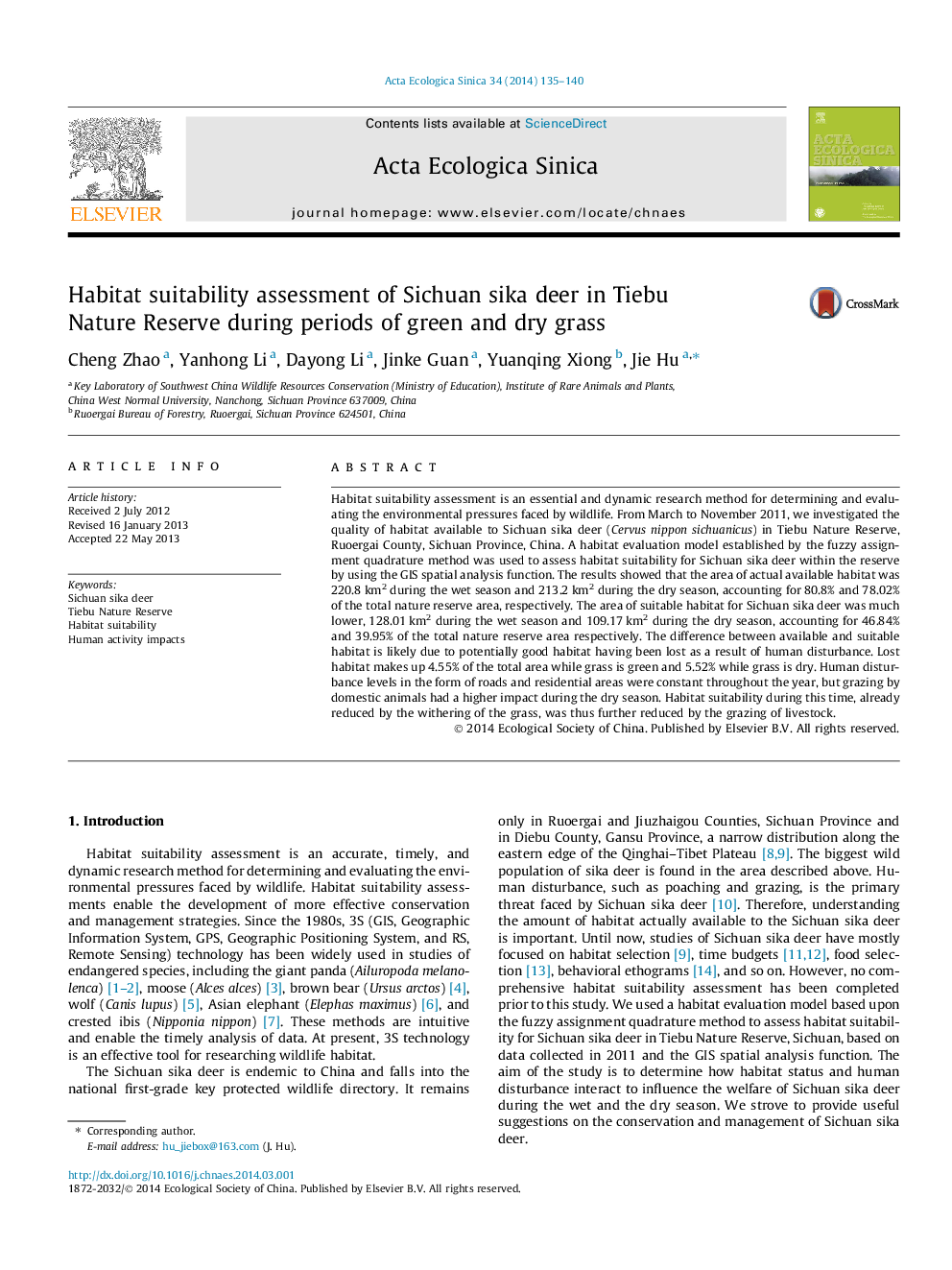| Article ID | Journal | Published Year | Pages | File Type |
|---|---|---|---|---|
| 4379916 | Acta Ecologica Sinica | 2014 | 6 Pages |
Abstract
Habitat suitability assessment is an essential and dynamic research method for determining and evaluating the environmental pressures faced by wildlife. From March to November 2011, we investigated the quality of habitat available to Sichuan sika deer (Cervus nippon sichuanicus) in Tiebu Nature Reserve, Ruoergai County, Sichuan Province, China. A habitat evaluation model established by the fuzzy assignment quadrature method was used to assess habitat suitability for Sichuan sika deer within the reserve by using the GIS spatial analysis function. The results showed that the area of actual available habitat was 220.8Â km2 during the wet season and 213.2Â km2 during the dry season, accounting for 80.8% and 78.02% of the total nature reserve area, respectively. The area of suitable habitat for Sichuan sika deer was much lower, 128.01Â km2 during the wet season and 109.17Â km2 during the dry season, accounting for 46.84% and 39.95% of the total nature reserve area respectively. The difference between available and suitable habitat is likely due to potentially good habitat having been lost as a result of human disturbance. Lost habitat makes up 4.55% of the total area while grass is green and 5.52% while grass is dry. Human disturbance levels in the form of roads and residential areas were constant throughout the year, but grazing by domestic animals had a higher impact during the dry season. Habitat suitability during this time, already reduced by the withering of the grass, was thus further reduced by the grazing of livestock.
Keywords
Related Topics
Life Sciences
Agricultural and Biological Sciences
Ecology, Evolution, Behavior and Systematics
Authors
Cheng Zhao, Yanhong Li, Dayong Li, Jinke Guan, Yuanqing Xiong, Jie Hu,
